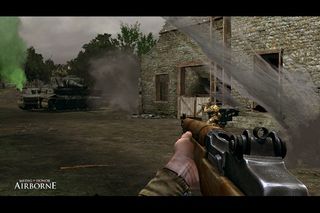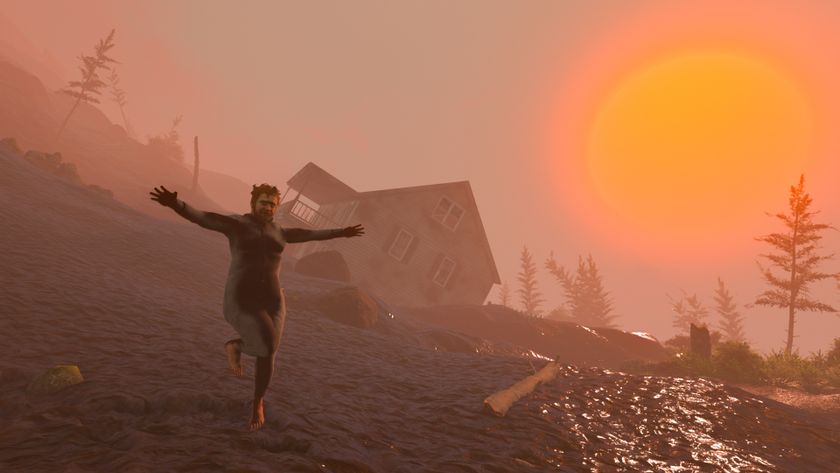Interview with Medal of Honor: Airborne's Executive Producer
Patrick Gilmore dissects EA's war machine
One of the big problems with European Assault (a PS2 MoH) seemed to be an over-reliance on incidental rewards like medal tokens. Will Airborne feature reward that’s more inherent in the action?
Gilmore: [pauses] Let’s just say it can be very, very challenging when you have an innovative feature in a game; there’s a strong temptation to celebrate it, often by putting additional icons on the HUD or whatever. And sometimes you integrate a feature but you realize it’s not as well understood by the user as you thought it would be. You go to a focus group and people say, “I don’t know whether I’m crouched or if I’m standing.” And suddenly you’ve got a crouch meter on the screen. It does tend to clutter up the HUD and create a “gameyness” to the whole thing.
One of the things we hit on over a year ago was the idea of shock versus injury, and that gave rise to Airborne’s health meter. Call of Duty had that Halo-style system where you could seek cover and recharge completely, and it was really controversial. If you read the reviews there were a lot that said it was really fake and a lot that said, “It’s great - I really don’t want to manage my health while I’m trying to have fun.”
So as we were thinking about that, we asked, “What happens to a soldier when they’re hit by a bullet?” Well the first thing is that you go into shock - in your mental space you’re thinking that you’re way more injured than you actually are. But you can recover from that, leaving just the injury. So we created a hybrid system that was part shock and part injury - you can recover part of the damage but there are permanent thresholds. That felt as close to the real experience as we could get.

Sign up to the GamesRadar+ Newsletter
Weekly digests, tales from the communities you love, and more












